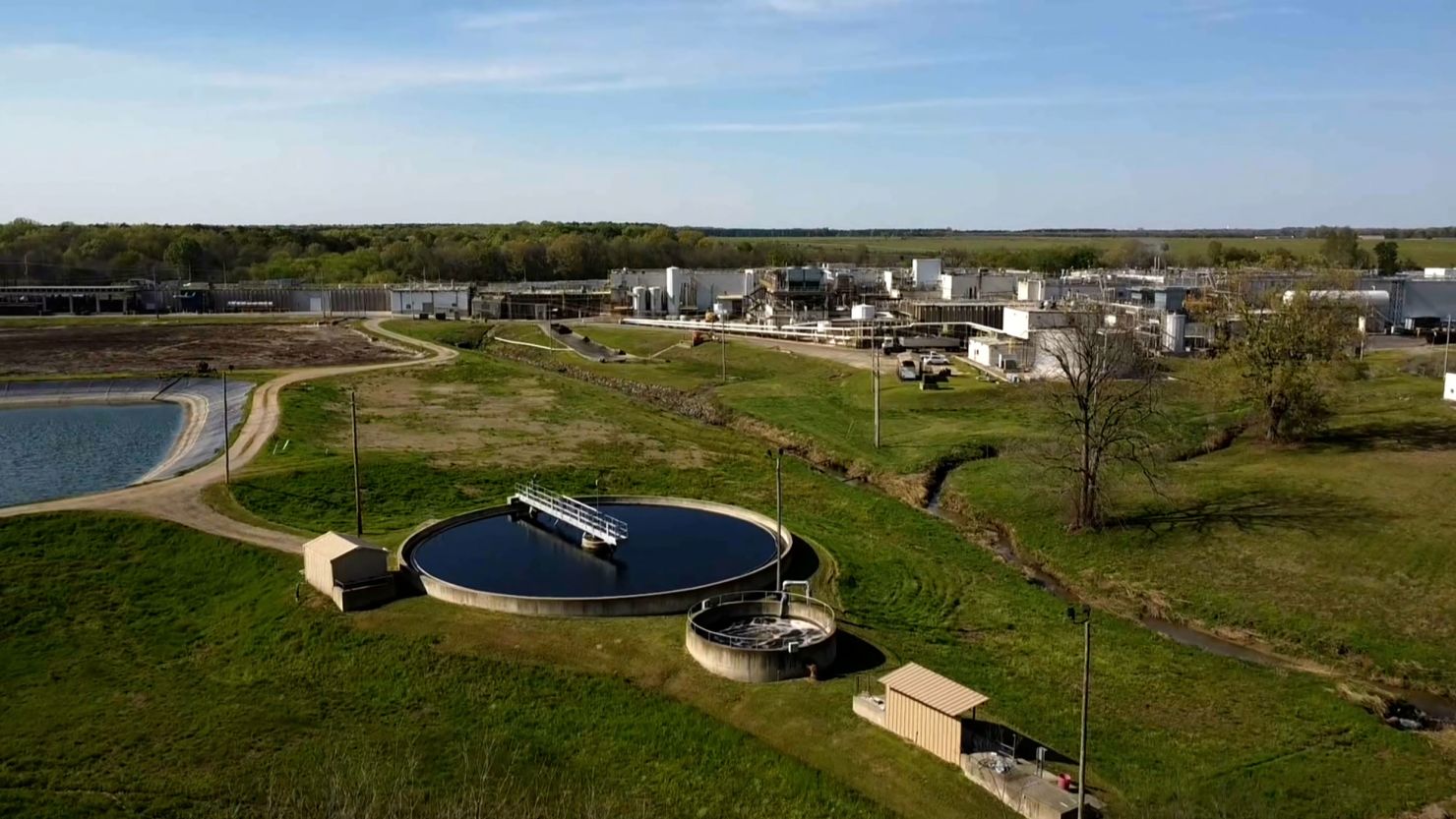Mimi Perkins’ job on the graveyard shift at a Tyson Foods poultry plant started like any other night: hosing down the blood, guts, and stray feathers left behind by hundreds of thousands of dead chickens. Then, she heard a single loud pop.
A pipe weld in the plant had ruptured, filling the room with a white cloud of ammonia gas – a chemical used to refrigerate meat that can be deadly in high doses. As other workers fled, Perkins lost consciousness and was trapped inside the plant for about forty minutes while the gas ravaged her eyes, throat, and lungs.
When a colleague finally dragged her outside, Perkins had red chemical burns on her face and leg. She heard a paramedic refer to her as “DOA” – dead on arrival. In the years since the 2016 accident, Perkins has undergone multiple throat surgeries and two cornea transplants, takes six kinds of eye drops, and suffers from chronic coughing fits that make it difficult to breathe, she said.
“It damaged every dang part of me,” Perkins said of the ammonia. “I can’t do what I used to do.”
While Perkins’ injuries were extreme, she was among dozens of employees of Tyson Foods, one of America’s largest meatpacking companies, who have been injured in ammonia leaks over the last decade, a CNN investigation found.
Tyson plants have experienced at least 47 ammonia leaks between 2012 and 2021, leading to almost 150 worker injuries, according to CNN’s analysis of previously unreported Environmental Protection Agency data covering facilities that store large amounts of hazardous chemicals. Of the 20 facilities that reported the most chemical release-related injuries to the EPA over that time period, five are Tyson meat plants, more than any other company.
Federal worker safety inspections have alleged poor maintenance or a lack of safety training at some Tyson plants where ammonia leaks injured workers. Tyson accounted for almost six in 10 of all ammonia-related injuries reported to the EPA by meat processing facilities – a disproportionate share of injuries compared to the amount of ammonia its plants use. The company’s ammonia injury count far outpaced its largest competitors.
Magaly Licolli, an activist in Arkansas who’s advocated for workers at Tyson and other meatpacking plants, said the leaks are part of a pattern of the company putting “profits over the safety of the workers.”

“It’s unacceptable, it’s inhumane,” Licolli said. “We should start seeing these workers as humans and people – that their work is really essential for us to have food on our table.”
In a statement, Tyson defended its record, arguing that it was more proactive than other companies in reporting ammonia accidents to the EPA.
“We greatly value the health and safety of our team members and take proactive measures to ensure a safe workplace and prevent workplace injury,” wrote Tyson spokesperson Derek Burleson. “We take every injury seriously and work diligently to continuously improve our processes and make our facilities safer.”
A decade ago, the federal government moved to address the problem. The Department of Justice sued Tyson in 2013 following a string of ammonia leaks, including one that killed a worker. The company signed a consent decree with the government, agreeing to pay a fine and conduct an independent review of the pipes in some of its plants, upgrading them when needed to prevent leaks.
But the federal government only included about two dozen Tyson facilities in the consent decree – leaving out the Arkansas plant where Perkins was severely injured three years later. Since the decree went into place, Tyson workers have continued to be exposed to the toxic gas, with some of the leaks that caused the most injuries taking place at plants that the consent decree overlooked.
CNN interviewed eleven current or former Tyson workers across three different plants who experienced ammonia leaks. They described lasting effects on their respiratory systems or struggles with mental health, and some said they received no prior training about what to do in the event of an ammonia leak.
In addition, CNN found one case in which Tyson reported far fewer injuries to the EPA than local officials documented. Tyson’s report on the 2014 ammonia leak at another Arkansas plant lists just a single injury, but records from the local fire department say more than two dozen people were injured – a former worker described a terrifying scene with many of her colleagues vomiting, crying and struggling to breathe.
Ammonia is cheap and efficient – but toxic
Tyson, which reported $53 billion in sales in 2022, is one of America’s largest meat processors. It employs 142,000 people, and produces one out of every five pounds of chicken, beef, and pork sold in the US, according to the company.
Anhydrous ammonia is a key chemical that Tyson and other meatpacking companies use to refrigerate their meat.
“Ammonia is a very efficient refrigerant and it’s quite cheap,” said Dr. Arch Carson, a University of Texas Health Science Center at Houston professor who has studied ammonia and other workplace chemical exposures for decades. “Most major refrigeration systems are designed using ammonia.”
But ammonia is also toxic, and depending on the exposure can cause temporary blindness, eye damage, skin irritation, and serious lung injury to workers who come into contact with it, according to health experts.
“It sucks water out of anything it encounters,” devastating the respiratory passages and eyes, Carson said, and with high enough exposures, “you can get death within seconds to minutes.”
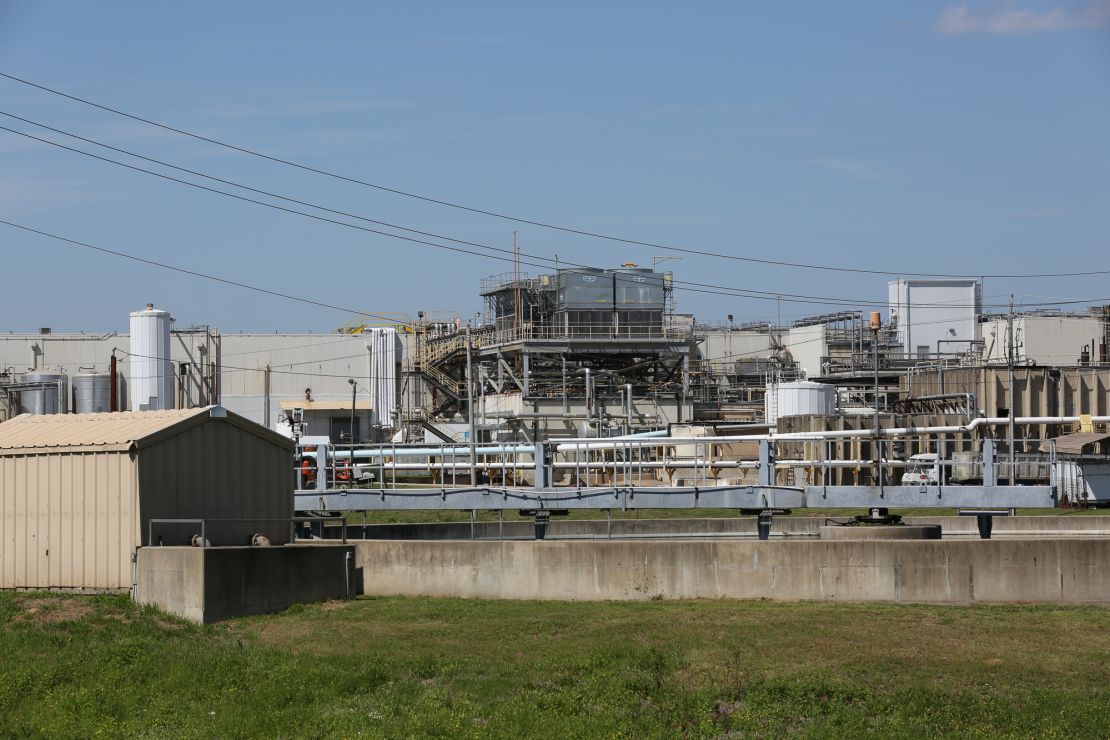
Mark Lauritsen, an official with the United Food and Commercial Workers International Union, which represents some Tyson workers, recalled an ammonia leak while he was working at a non-Tyson meatpacking plant in Iowa during the 1980s. “We probably evacuated in less than 15 seconds and we still had people at the hospital,” Lauritsen said. “That’s how fast it can get you.”
Facilities that store large amounts of hazardous chemicals like ammonia are required to file regular reports with the EPA documenting accidental releases and injuries as part of the agency’s Risk Management Program. CNN obtained the database of reports from the Data Liberation Project, a new initiative that works to make government records more accessible, which requested it under the Freedom of Information Act and published it online.
Tyson has about 100 facilities across the United States that store enough ammonia to require reports to the EPA, with a combined inventory of more than 10 million pounds of the dangerous chemical, according to CNN’s analysis of the agency’s records.
Tyson plants stood out on the list of the facilities with the most injuries from accidental releases of any hazardous chemical, accounting for five of the top 20. No other company owned or operated more than a single facility among those 20 most dangerous locations.
In total, Tyson reported 146 ammonia leak-related injuries between 2012 and 2021 – about 57% of ammonia injuries reported at all meat processing facilities in that time period. But the company’s locations only accounted for about 25% of the stored ammonia that the meat industry reported to the agency.
Five of its top competitors – Cargill, JBS, National Beef, Smithfield Foods, and Sysco – reported a combined total of 37 ammonia leak-related injuries over the decade, about a fourth of Tyson’s injuries, even though their facilities reported holding slightly more ammonia in total than Tyson’s plants.
Facilities that store 10,000 pounds or less of anhydrous ammonia are not required to submit reports under the Risk Management Program, so the data does not include accidents at those plants. Companies are generally required to file reports every five years, and also update those reports within six months of any chemical release that leads to an injury or has other consequences.
In his statement, Burleson, the Tyson spokesperson, said that the company has seen a decline in ammonia accidents in recent years. The fact that Tyson has reported more ammonia injuries than some of its competitors “only indicates that [Tyson] affirmatively identified more incidents to the EPA than other companies did,” he said.
“We follow all federal regulatory requirements and fully investigate all ammonia-related incidents,” Burleson said, adding that the company’s investigations include “a root cause analysis and a corrective action plan.”
In addition to worker injuries, some larger ammonia leaks at Tyson plants have led to evacuations or shelter-in-place orders in nearby communities. For example, one 2013 release in Arkansas led to 911 calls from local residents reporting breathing problems or eye irritation, and multiple people walking into hospitals, a fire department report showed. And a 2021 leak in Tennessee led to dozens of people being temporarily evacuated from a neighborhood near a Tyson plant, according to the local fire chief.
More broadly, data from the Occupational Safety and Health Administration shows that Tyson plants have received citations for more than 90 violations since 2012 related to the safe handling of chemicals or deficient trainings or warnings about hazardous substances, although some were later dropped in settlements between Tyson and the agency.
Employees who experienced ammonia leaks at Tyson plants, some of whom asked not to be named because they still work for the company, described serious injuries with medical or mental health impacts lasting years.
One Tyson worker who escaped an ammonia leak described a feeling she likened to a hand pressing on her chest, making it hard to breathe, ever since the incident. Another said that after he was exposed to ammonia, his eyes were so swollen that for weeks he struggled to drive or even watch basketball on TV.
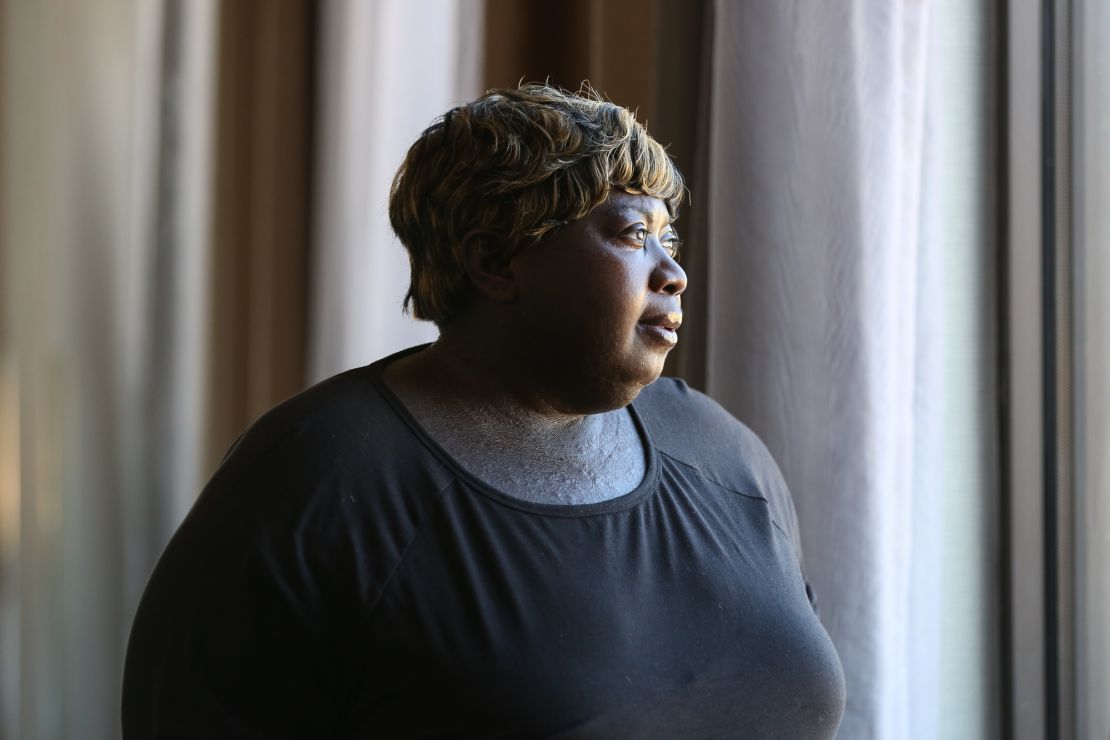
Shani Haynes, who was working the night of the 2016 leak in Hope, Arkansas, that severely injured Perkins, remembered the intense anxiety she felt after returning to work the following day.
“I literally started having a panic attack and started crying, and did not want to go into the building,” said Haynes, who has since left her job at Tyson. “I could still smell the smell.”
Tragedy in Hope
The plant where Haynes and Perkins worked sits just outside the city of Hope – the birthplace of former President Bill Clinton, who used it as a driving metaphor in his political oratory.
Like many Tyson meat plants, the enormous industrial facility is an economic lifeline for a small rural town. It’s the county’s largest employer, and some families have worked there for generations: Haynes’ mother cleaned the plant for decades before Haynes was hired.
Every weekday, approximately 268,800 live chickens arrive at the Hope plant, according to state records. They leave as nuggets, tenders and other packaged items destined for dinner tables and restaurants across the country. One poster on the fence of the plant proudly declares Tyson “McDonald’s global supplier of the year,” while another reads, “If it ain’t Safe DON’T do it!!”
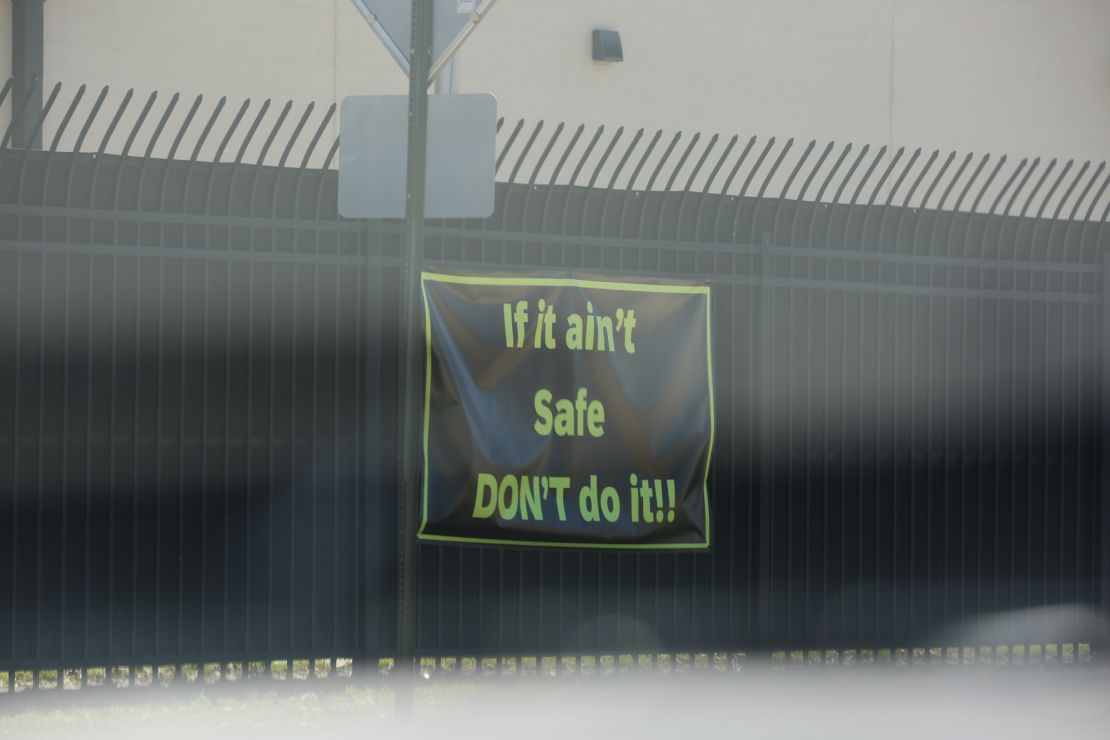
Perkins started working at the plant in November 2015, a few months before the accident, as a sanitation worker on the night shift.
Around 3 a.m. on April 23, 2016, the weld on an end cap of a refrigeration pipe containing ammonia burst while Perkins and her fellow workers were cleaning the plant, according to Tyson’s report to the EPA, as well as court and labor filings and witness accounts. Eight workers were injured, including Perkins.
Employees who experienced the leak described a terrifying rush to escape from the white cloud of ammonia gas, which made it hard to see or figure out where to go. Delfort Minor, who said he was saved by a bathroom break right before the leak took place, compared the chaos to an active shooter incident.
“All of the sudden, people come running out of the plant screaming and hollering,” Minor said. “I thought somebody got shot.”
Outside, as workers cried and gasped for air, they realized that Perkins was trapped inside. Eventually, Minor and other witnesses said, a colleague went back in and dragged her out of the building.
Minor, Haynes and another coworker told CNN that they had never been trained about what to do in the event of an ammonia leak before the incident took place, and that there had been no alarm or warning about the release.

Burleson said Tyson “provides hazardous chemical training and emergency response training to all team members during onboarding and annually, so they are equipped with the understanding of what to do during chemical releases and other emergency situations.”
Perkins was brought to a local hospital and intubated before being airlifted to a hospital in Little Rock, according to medical records. Photographs of Perkins in the hospital show her lips and tongue inflamed and her eyelids sealed shut in order to help her corneas heal. She had lesions on her body and a large chemical burn on her leg.
OSHA launched two inspections of the plant in the months after the incident. The investigations concluded that Tyson had not properly checked and inspected the welded end cap that burst, the plant didn’t have an ammonia alarm, and employees were not trained on ammonia response and safety. In addition, according to OSHA, Tyson had years earlier conducted a safety review that led to recommendations that the company install ammonia detectors and upgrade piping in the Hope plant – but hadn’t followed through on those suggestions.
“Ammonia piping with deteriorated coatings and extensive corrosion damage was allowed to remain in service,” one of the citations stated.
The agency cited Tyson for 15 violations and fined the company $140,000. Tyson contested OSHA’s allegations, and later settled with the agency and paid a reduced total of about $77,000, public records show. As part of the settlement, Tyson agreed to “install an employee alarm for chemical releases” and “retrain all affected employees” at the plant about “ammonia hazards.”
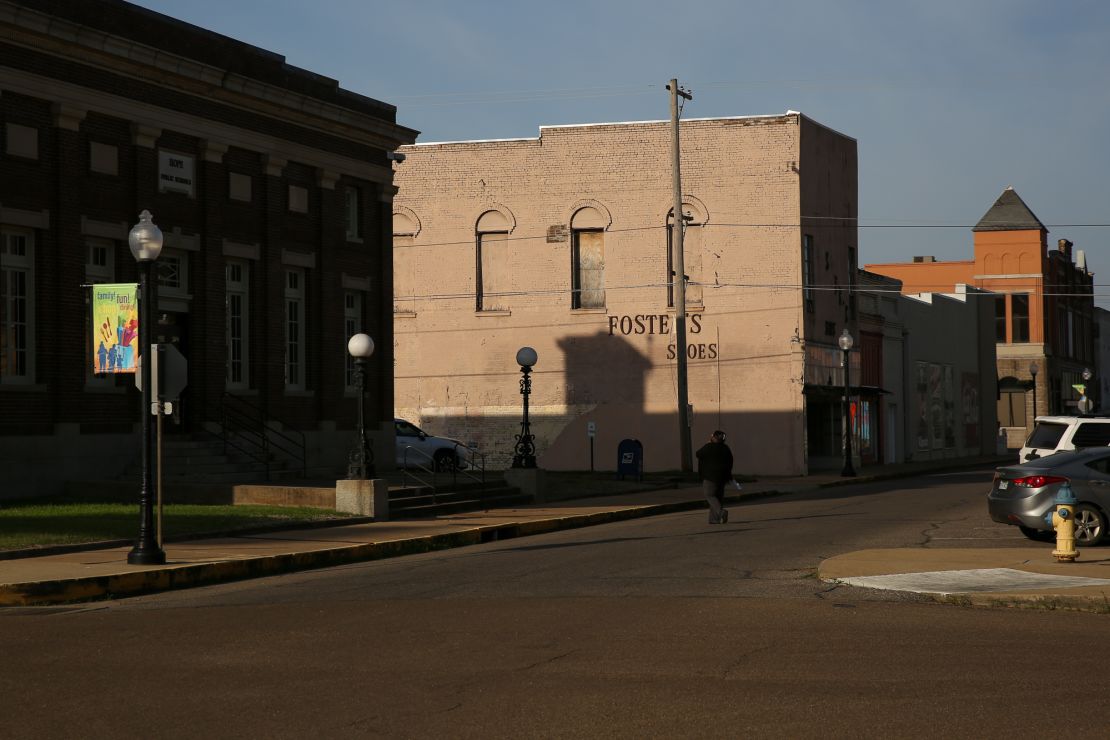
Because Tyson paid for Perkins’ extensive medical bills under the state’s workers’ compensation system, she was not able to sue the company for her injuries, according to her attorney, Jim Jackson. Instead, Perkins sued the refrigeration contractor that had done welding work on the pipe a few months before the incident.
The contractor argued in a legal filing that Tyson “was negligent in its maintenance and operation of the refrigeration system resulting in abnormal pressure of the ammonia.” Perkins and the contractor later settled the lawsuit.
Burleson said that the Hope release was caused by the failure of the “weld from an outside contractor.” Since the April 2016 incident, he said, the Hope plant has not experienced any ammonia releases that led to injuries or otherwise had to be reported to the EPA.
In the years since, Perkins’ life hasn’t been the same. She’s unable to work, often shuttles between doctors appointments, and continues to have difficulty breathing and seeing. While she said the desire to get back to her six grandkids was her motivation for staying alive during her ordeal, she’s now unable to chase them around or play with them like she once did.
“I can’t go out there and mow my yard because I get short-winded or tired. You know, a lot of stuff I can’t do that I used to could do,” she said. “It just changed a lot.”

Minor’s injuries have been less visible. The truck driver said he has suffered nightmares about the incident in the years since, including dreams that he was trapped in a gas chamber.
“That event, it really plunged me into a darkness,” Minor said, adding, “it will send thoughts to your mind that you don’t want to be there.”
Tyson’s accident report doesn’t tell the whole story
Tyson’s reports to the EPA about ammonia accidents like the one that hurt Perkins and Minor portray a troubling picture of the company’s safety record. But CNN found one example where the company may have undercounted the injuries caused by the toxic gas.
The company’s report on the December 2014 leak at its “Chick-N-Quick” poultry plant in Rogers, Arkansas, a half-hour drive from Tyson’s headquarters, portrayed a relatively minor incident: an equipment failure led to an ammonia leak that injured a single worker.
But local records and a worker who experienced the incident tell a different story.
A report from the Rogers Fire Department, which CNN obtained through a public records request, stated that 25 people were injured during the ammonia release and that emergency responders transported at least 11 workers to the hospital.
In addition, spokespeople for two local hospitals told news outlets that a total of 25 Tyson employees went to the hospital and were later discharged. The leak occurred when repairs on the refrigeration system led to ammonia being released into the building’s ventilation ducts in the middle of the day, the fire department report said.
Martha Hernandez, a Mexican immigrant who was working at the plant packaging chicken tenders that day, said she was preparing to return to the factory floor after a bathroom break when a white cloud seeped into the changing room. She was rushed out of the factory by her supervisor, whose voice she could hear through a thick fog.
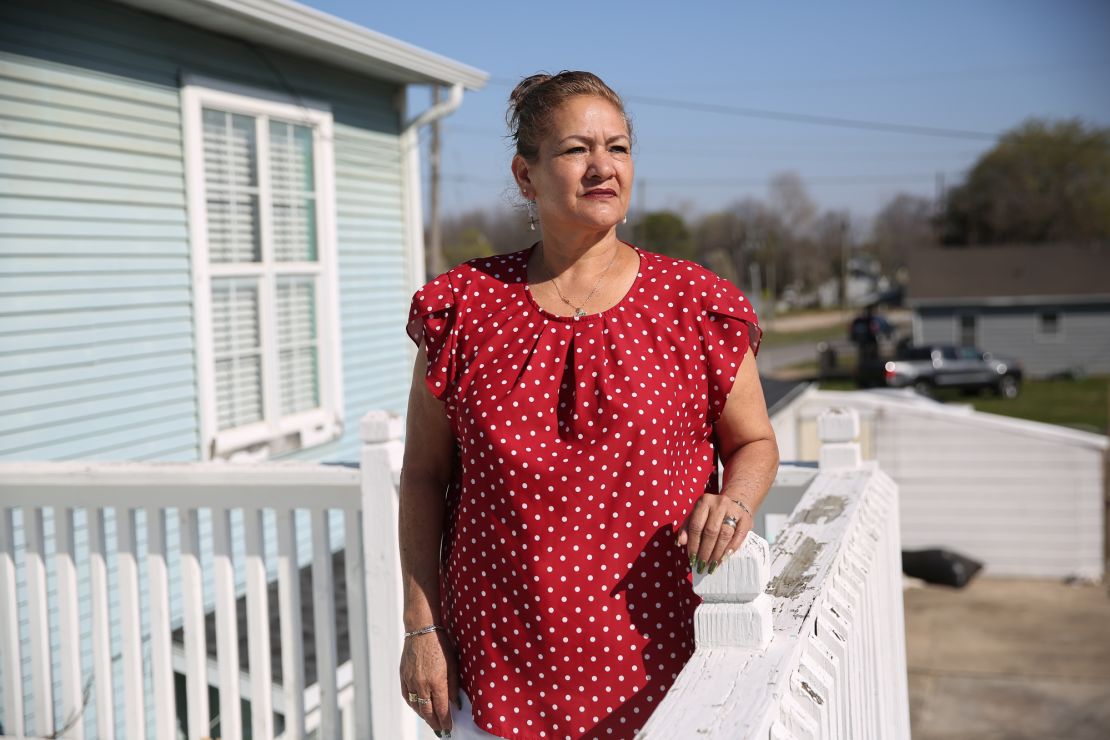
When the exit door swung open, workers spilled out onto the plant’s parking lot, which she said felt like an open-air hospital ward. Hernandez said she saw dozens of affected employees there, crying out in pain or strung out on the floor gasping for air. Hernandez, who was struggling to breathe, said she told her supervisor multiple times that she needed medical attention, but was rebuffed. “She kept telling me that the outside air would make me feel better,” Hernandez recalled.
Hernandez, who no longer works for Tyson, still has medical challenges that she believes stem from the incident – she uses an inhaler three to four times a day to help her breathe and has visited multiple doctors to try to treat her lung ailments. She said Tyson should do more to train workers about the dangers of ammonia.
“I came here to have a better life,” Hernandez said. “I think I’m worse today than if I were in Mexico.”
In response to questions about the discrepancy between local reports of 25 injuries and Tyson’s EPA report of a single injury, Burleson said that “transport to the hospital alone does not satisfy the criteria for a recordable injury” in EPA regulations. According to agency documents, companies are supposed to count anyone who requires medical treatment beyond first aid as an injury.
In addition, an employee at Tyson’s plant in Amarillo, Texas, was “hospitalized after inhaling anhydrous ammonia” after a pipe broke in September 2017, according to an OSHA severe injury report. But Tyson did not report that incident to the EPA – even though it did report other accidents there in the following years. According to the EPA, facilities are required to report any accidental releases that result in injuries, regardless of how large the leak is.
Burleson said that “our records and other OSHA records indicate that no team member was hospitalized in connection with the Amarillo incident,” citing an OSHA report about the accident that labeled it a “Non Hospitalized injury.”
Paul Orum, an independent researcher who’s used EPA data to write reports about chemical leaks, said that because the accident data is self-reported, there can be questions about its accuracy.
“Obviously that sounds like a concern,” Orum said of the examples of Tyson potentially undercounting, but he added that it’s unclear whether the EPA would take action to enforce rules ensuring report accuracy “unless it’s part of a larger investigation.”
Missed opportunity to solve problem
A decade ago, the federal government stepped in to protect Tyson workers from ammonia exposure. But for workers at some plants, the effort didn’t go far enough.
In April 2013, following a string of ammonia leaks at Tyson plants, the Department of Justice and the EPA sued the company, arguing that it had violated the Clean Air Act. The complaint alleged a litany of infractions, such as inadequate safety training, defective ammonia alarms, and a lack of necessary maintenance to piping systems.
The same day the government filed the lawsuit, it also came to a consent decree with Tyson to address the problem. While Tyson didn’t admit to violating the law, it agreed to conduct independent audits of ammonia storage policies at 23 of its plants to review safety training protocol and engineering practices and test certain piping, replacing it when needed.
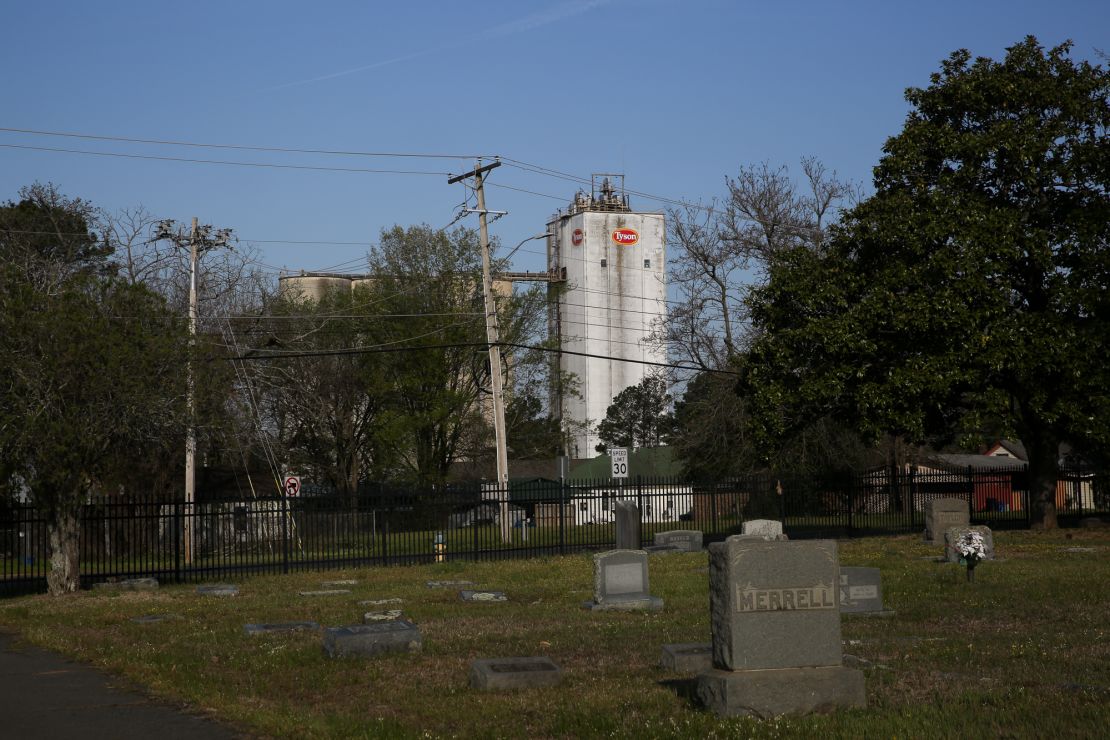
Tyson also paid a nearly $4 million fine and purchased $300,000 worth of equipment for local fire departments and first responders.
The consent decree stemmed from an investigation by the EPA’s Region 7, which covers Kansas, Iowa, Missouri and Nebraska, according to agency spokesperson Melissa Sullivan. Plants in Arkansas and other states – like the ones in Hope and Rogers that later experienced leaks that injured workers – were excluded from the decree.
EPA officials focused on facilities in the four Region 7 states because they did not have evidence “that other facilities were experiencing the same level of noncompliance,” and because Tyson plants “did not appear to have centralized environmental management,” Sullivan wrote in an email.
In the decade since that agreement was signed, dangerous gas leaks have continued and Tyson employees have continued to be injured. In total, there have been at least 34 accidental discharges at Tyson plants since the mid-2013 settlement, leading to more than 85 worker injuries, the EPA data shows.
Notably, 2018 marked Tyson’s second-highest reported ammonia injury count of the 2000s – and data for more recent years may be incomplete.
In January 2017, during the last days of the Obama administration, the DOJ terminated the consent decree, saying in a filing that Tyson had certified that it had completed its side of the agreement.
The EPA reviewed the company’s independent audits of its facilities “and was satisfied that the company was complying with its Risk Management Program requirements,” Sullivan, the EPA spokesperson, said. Burleson also said that Tyson fully complied with the consent decree, and that the company performs frequent internal audits.
Still, some Tyson workers who lived through ammonia leaks said they wished more had been done to protect them.
“These are some dangerous chemicals that can take a person away from their families,” said Minor, who, despite making it out, still struggles with the memory of the ammonia leak. “I will never forget that night.”
Methodology
CNN used a copy of the EPA’s Risk Management Program database from the Data Liberation Project, which obtained it through a freedom of information request and has published the data online. Only facilities that hold more than a designated amount of a hazardous substance – including 10,000 pounds of anhydrous ammonia – are required to file RMP reports. That means that the data doesn’t necessarily cover Tyson plants or other meat facilities that hold smaller amounts of ammonia.
Facilities that hold more than the designated amounts are required to report any accidental releases that result in injuries, deaths, evacuations, sheltering in place, or significant property damage. CNN removed duplicate reports for accidents at the same facility on the same day, keeping only the most recently filed report.
To compare ammonia leaks at Tyson Foods plants with those at other meat processing companies, CNN reviewed facilities that reported having NAICS codes starting in “3116” – a classification that identifies businesses involved in animal slaughtering and processing. That included most of Tyson’s facilities.
CNN chose to review accidents between 2012 and 2021 because 2021 was the last full year with data available. Because facilities only have to file RMP reports every five years and file additional updates within six months of an accident, data on accidents in 2021 is incomplete. In addition, each facility’s filing schedule is different, so some facilities have filed more recent reports than others.
When calculating the amount of ammonia held at meat processing plants, CNN used the most recent report filed by each facility.
No ammonia leak-related deaths were reported at Tyson Foods plants in the period CNN analyzed. Three other facilities using ammonia reported at least one death, and CNN counted those fatalities as injuries for comparisons between Tyson plants and other facilities.
CNN’s Scott Bronstein and Daniel A. Medina contributed to this report. University of Central Arkansas journalism student Emily Kennard also contributed for CNN.

